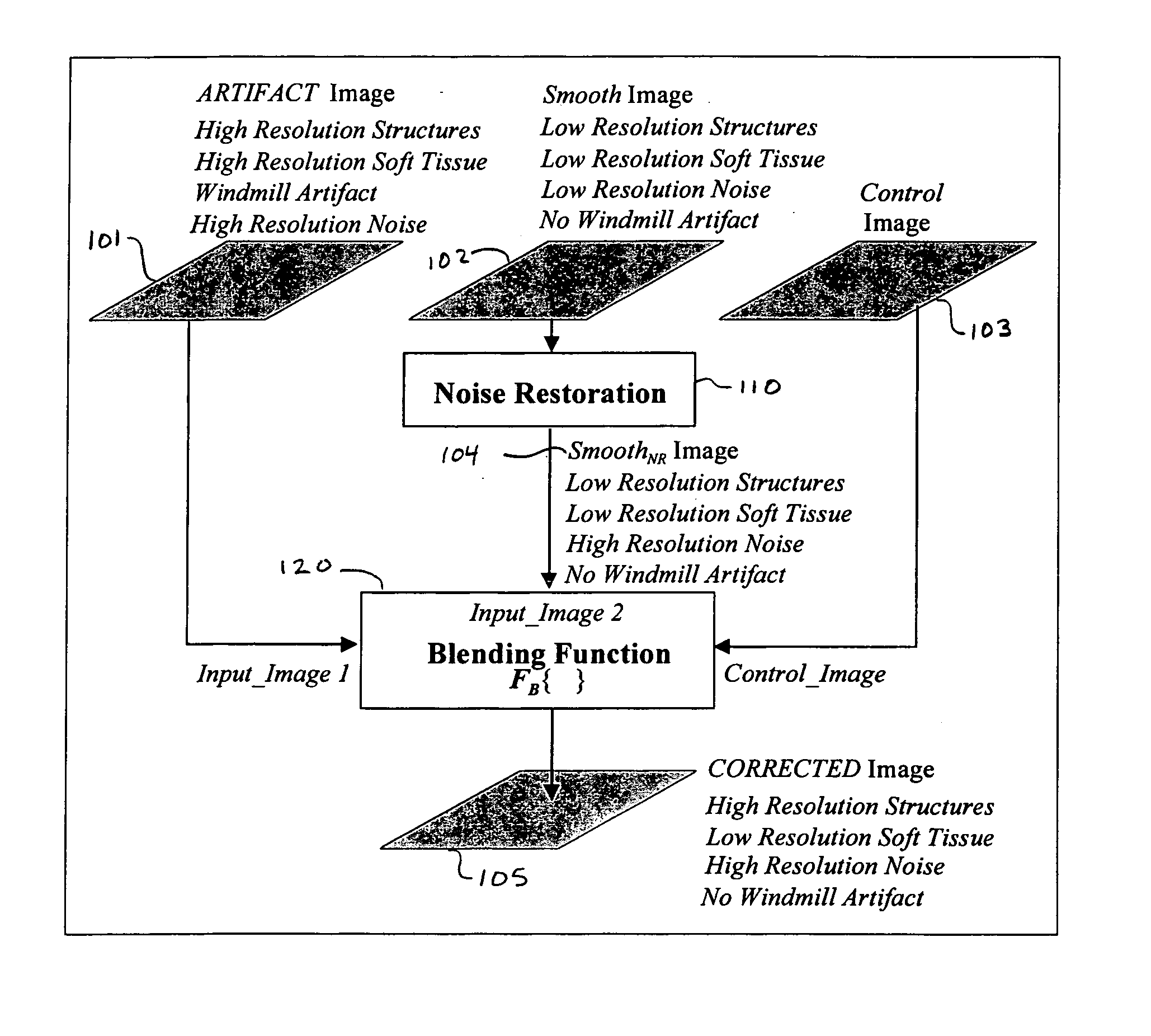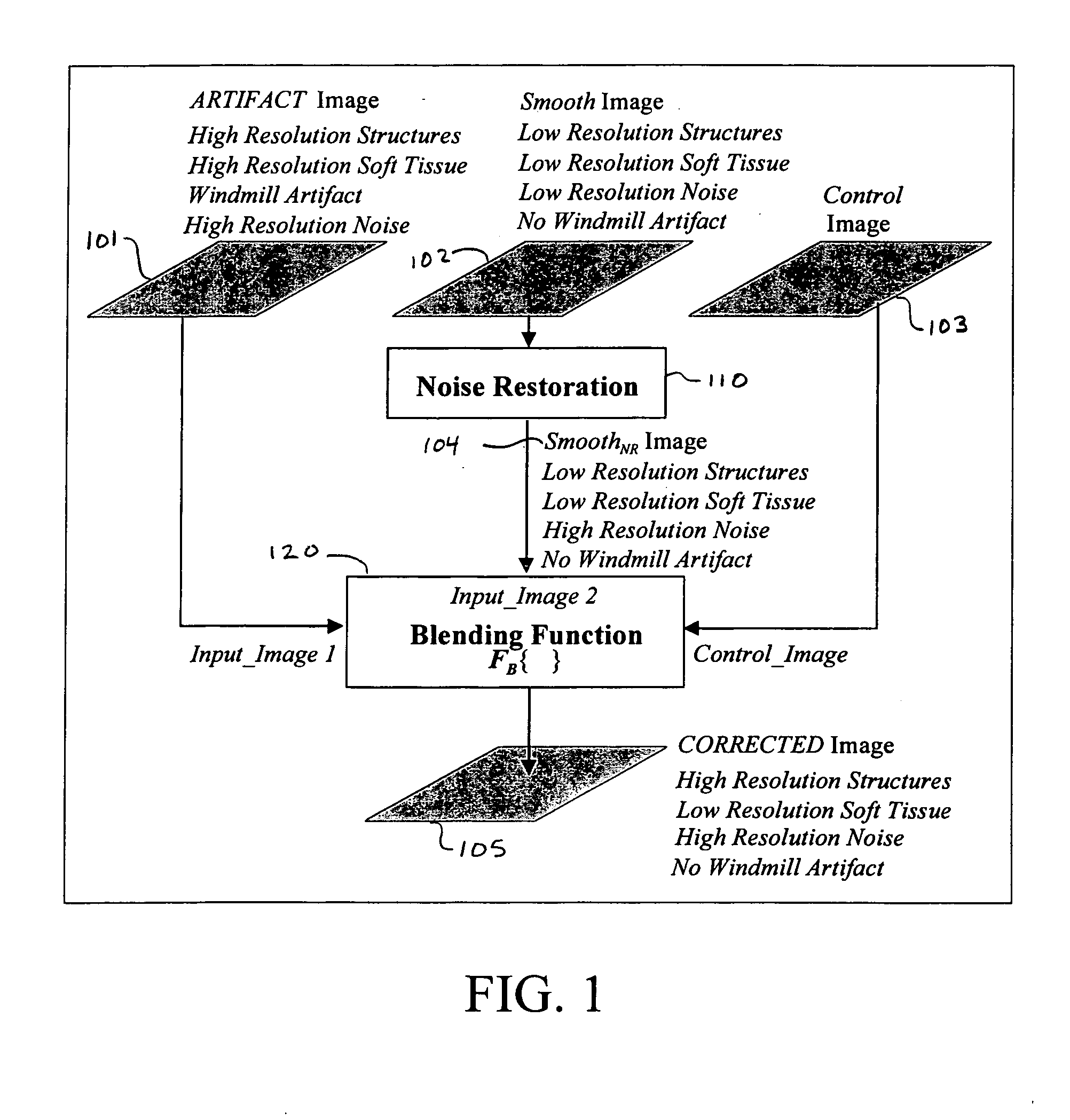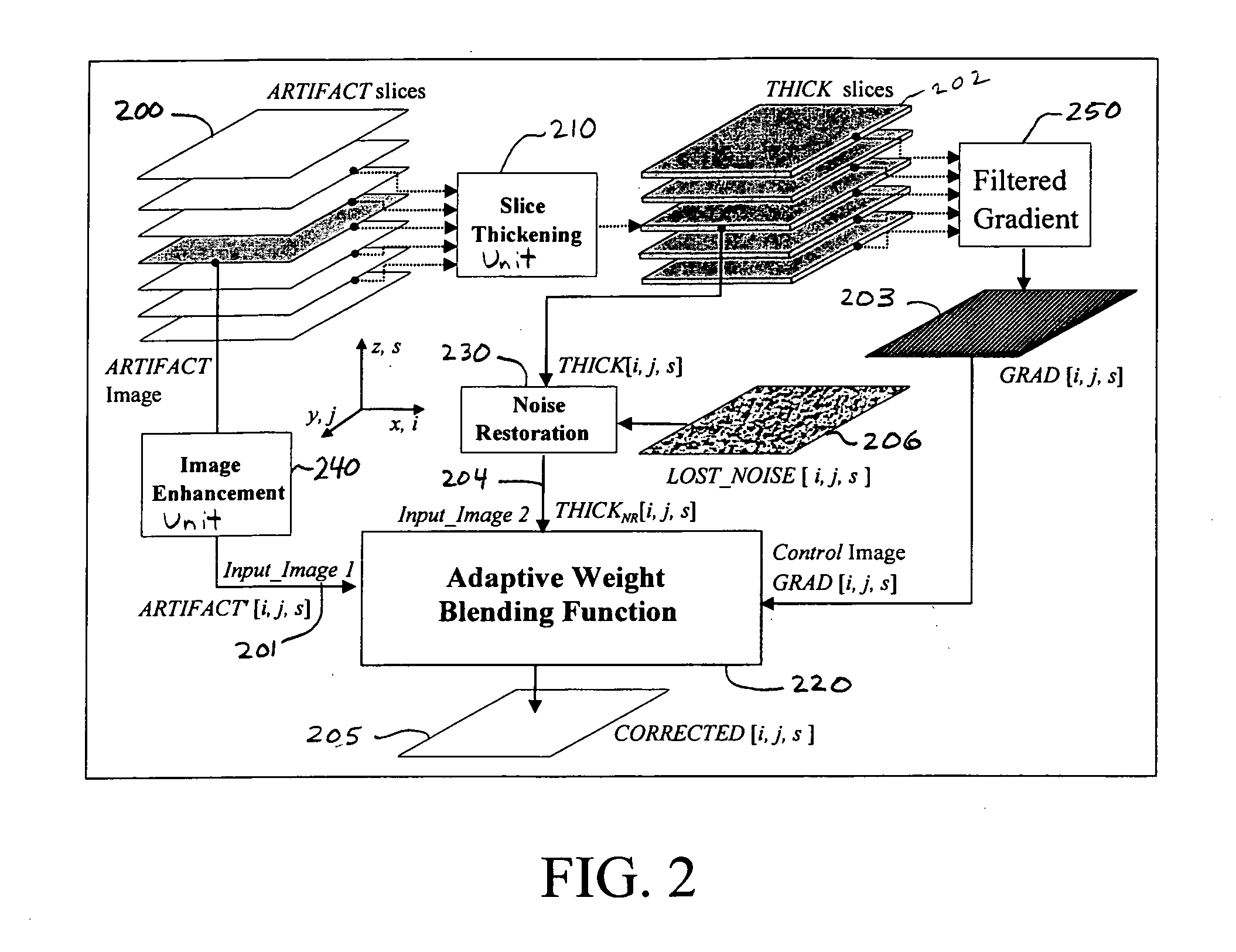Method for helical windmill artifact reduction with noise restoration for helical multislice CT
a technology of helical windmills and noise restoration, applied in the field of methods, can solve the problems of loss of image resolution, uneven noise, uneven noise, etc., and achieve the effect of preserving edges and background noise patterns
- Summary
- Abstract
- Description
- Claims
- Application Information
AI Technical Summary
Benefits of technology
Problems solved by technology
Method used
Image
Examples
Embodiment Construction
[0020] The present invention is directed to a system, method, and computer program product that corrects the windmill artifact and retains the sharpness of edges and background noise patterns. As shown in FIG. 1, an artifact image 101 and a smooth image 104 are combined to form a corrected image 105. This is accomplished by an adaptive blending of two input images, i.e., artifact image 101 and smooth image 104, where a control image 103 and blending function 120 (FB{ }) determine how the input images are blended. Further, smooth image 104 is the output of Noise Restoration Unit 110, which restores high resolution noise to smooth image 102, as shown in FIG. 1.
[0021] A system corresponding to the preferred embodiment of the present invention is shown in FIG. 2. Generally, the i and j indexes represent pixels in the lateral x and y directions, and the s index represents the slice position in the axial z direction. The input is the artifact image volume 200, which comprises a plurality...
PUM
 Login to View More
Login to View More Abstract
Description
Claims
Application Information
 Login to View More
Login to View More - R&D
- Intellectual Property
- Life Sciences
- Materials
- Tech Scout
- Unparalleled Data Quality
- Higher Quality Content
- 60% Fewer Hallucinations
Browse by: Latest US Patents, China's latest patents, Technical Efficacy Thesaurus, Application Domain, Technology Topic, Popular Technical Reports.
© 2025 PatSnap. All rights reserved.Legal|Privacy policy|Modern Slavery Act Transparency Statement|Sitemap|About US| Contact US: help@patsnap.com



